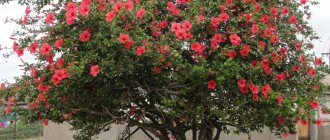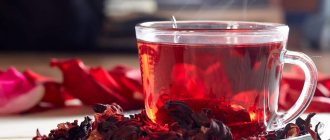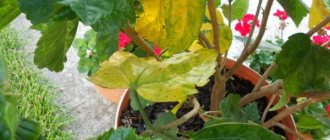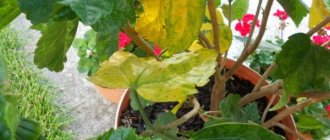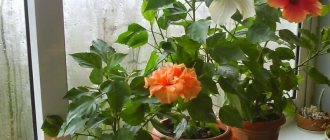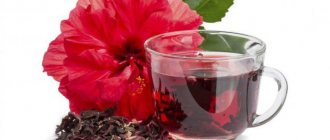Hibiscus can be a tree, shrub, or herbaceous plant. Representatives of this garden plant number about 200 species.
Many gardeners love to grow this plant, as it is a very pleasant pleasure. One type of hibiscus is used for tea, which is called hibiscus. A photo of garden hibiscus shows that this is an incredibly beautiful plant.
Hibiscus: origin and distribution
Researchers have discovered beautiful, colorful flowers in the tropical forests of Asia for the first time. In the wild, hibiscus grows as shrubs reaching three meters in height. The Chinese rose is also widespread in South America, especially in Argentina, where these flowers are usually grown in almost every home.
You may be interested in: How to remove snakes
Hibiscus was brought to Europe only in the 18th century, where it became fashionable and was grown in greenhouses and homes. Despite the fact that many superstitions are attached to it, its care and colorful flowering evoke only positive reviews from gardeners. Why is hibiscus the flower of death? The answer to this question will be discussed below.
How can there be a danger to hibiscus?
The main pests of this plant are considered to be spider mites. These insects multiply very quickly and in a short time cover the entire plant with cobwebs, which is detrimental to the plant.
If the damage to the plant is significant, it is necessary to use special means that are aimed at controlling pests.Attitude to flowers in different countries
In Asian, American and European countries, Chinese roses are treated differently:
- in Asian countries (Malaysia, Indonesia, the islands of Fiji and Haiti) the plant is considered a cult plant; holidays and festivals-processions are organized in honor of hibiscus;
- in Malaysia, hibiscus blossoms are called a harbinger of imminent wealth, and for unmarried Chinese girls it promises an imminent wedding and love;
You may be interested in: How to remove snakes
- in Brazil and Argentina, the blooming of the Chinese rose foretells the birth of a healthy baby;
- its Chinese name is indicated by a special hieroglyph interpreted as the word “exquisite”;
- in European culture, on the contrary, there are many signs and superstitions associated with hibiscus.
Botanical description
According to the scientific classification, hibiscus belongs to the evergreen shrub plants of the Malvaceae family, which can be annual or perennial.
The plant has petiolate, incised leaves. The fruits are formed into a capsule, which breaks into 5 parts; inside it there are pubescent or smooth seeds in large quantities. The brightest and most beautiful part of the plant is the hibiscus flower (photos of various colors are shown below).
For growing at home in European countries, a greenhouse type of hibiscus called the Chinese rose (lat. Hibiscus rosa-sinensis) is used. The Malay Archipelago is considered its homeland and has flowers of different colors and shapes. Over the past 20 years, geneticists have been able to develop many new varieties of Chinese roses, which flower growers rightfully consider one of the main decorations of many home flower beds.
You may be interested in: How to grow thuja from cuttings
Similar flowers
- Significantly similar to white hibiscus is the unpretentious white oleander, which has large snow-white flowers. Plus it has a wonderful aroma.
- Ruelia Brittona has soft pink flowers, shaped like hibiscus flowers.
- White Streptocarpus has white flowers with bright purple stripes at the core.
- The familiar begonia also has similarities with hibiscus.
There are more than 900 varieties of this flower, and its tuberous varieties are most similar to the Chinese rose. For example, the begonia variety Odorata White has snow-pink ruffled flowers.
We invite you to familiarize yourself with other types of Chinese roses. Read about garden, herbaceous, double, bonsai, swamp hibiscus, as well as varieties such as Changeable, Variegated, Fireball and Coopera.
Like anyone from distant countries, hibiscus needs special conditions of maintenance . But all efforts and efforts are generously rewarded by its beauty.
Varieties and hybrids
Hibiscus has a wide variety of species (about 300), however, its 2 main species are common in Russia and the CIS countries:
- Syrian - grows in the southeast of Transcaucasia, where the subtropical zone is located;
- trifoliate, or northern - common in countries with a continental climate (in the southern regions of Ukraine, Western Europe, regions of the Far East and Kazakhstan).
The most beautiful and beautiful species is the swamp hibiscus, the flower (photo below) of which can reach 12 cm, has a bright purple color, but prefers to grow in a tropical climate.
Hybrid varieties of hibiscus, bred back in USSR times in Tashkent, are herbaceous plants. One of them - red hibiscus - has the largest flowers, reaching a diameter of 27 cm, and original “maple” leaves of a reddish hue. In the southern regions of Russia they are even planted in open ground, but it is preferable to grow the plant at home in a greenhouse.
Diseases and pests
All varieties are resistant to pests and diseases.
Aphids, spider mites, and whiteflies may appear in hot weather. Insects are killed by insecticide. Requires 2 sprays with a break of 10 days. In the absence of spring pruning, fungal diseases (leaf spot or rust, powdery mildew) may develop during rains. With a lack of iron and nitrogen, chlorosis develops : the lower leaves fall off and the leaves that grow back turn yellow.
The problem is solved by adding iron supplements to the water and adding nitrogen to the soil. The foliage may turn yellow after transplantation (if the roots are damaged). It is necessary to add zircon (root) when watering.
The reason for leaf fall is insufficient (excessive) watering. Buds do not form if the soil is low in phosphorus or boron. Shoot growth accelerates after nitrogen is added to the soil.
Signs and superstitions
It should be said right away that all negative signs apply to those cases when Chinese roses are grown at home. Most often they concern a situation when a plant suddenly begins to bloom or unexpectedly withers. This is considered a harbinger of the onset of misfortune.
The most common signs that the Chinese rose or hibiscus is the flower of death:
- According to some reports, the plant is capable of absorbing the powers of the person in whose house it grows. Proponents of this theory believe that the owner of the flower dies of exhaustion when the Chinese rose blooms long and profusely.
- Other superstitious people claim that a flower planted in a house sows irritation and anger around itself, attracts illness, and then death, and acquires maximum negative power at the moment of flowering.
- If the leaves of a flower begin to turn yellow and fall off, then someone in the house will get sick.
- The plant was given the nickname “husband racer” because it attracts suitors to the bride-hostess, and then scares them away, which is why the girl remains unmarried.
- The flower provokes constant quarrels between wife and husband, the owners of the house, which can lead to divorce.
- Another nickname for hibiscus is “burnet.” The plant supposedly, like a vampire, sucks energy from its owner.
You may be interested in: Why do strawberries dry out?
However, according to scientists, all these superstitions about hibiscus as a flower of death are not confirmed by anything and are associated with ordinary coincidences. It is known among flower growers that, being among other plants, the Chinese rose does not harm anyone, because they all grow well and do not die.
Possible problems with plant propagation
An undeniable advantage in the technique of growing shrubs is its natural endurance. Possible problems with plant propagation can only arise if agricultural practices are grossly violated. Small mistakes in caring for the plant will not cause it to wither, unless they occur constantly. However, there are a number of problems that many gardeners who grow exotic flowers face.
Due to a sudden violation of maintenance conditions, which include low temperature, lack of water or high humidity, the plant may stop blooming, the buds will fall off, and the leaves will begin to turn yellow. Overwatering the plant or too much sunlight can cause the leaves to change color. Yellowing of leaves can also be associated with a deficiency of minerals in the plant. Insufficient or incorrect feeding can cause problems with vegetative growth and flowering of hibiscus.
A popular problem for shrubs is the topic of pests that infect plant tissue and interfere with their growth. Aphids and spider mites are the main sources of infection. The cause of wilting of hibiscus can be ineffective treatment with chemicals, which can provoke a phytotoxic reaction of the bush. The leaves will change shape and become stiff.
Explanations of scientists
According to biologists, the unusual behavior of the plant (violent flowering and wilting) is evidence of unfavorable changes in the environment and microclimate in the room where the hibiscus is located. It can be caused by the appearance of mold from dampness or drying out due to high dry air, harmful emissions from nearby industrial enterprises.
Scientists also explain the myth that a withering plant becomes a vampire by natural causes. The stems and leaves of hibiscus have high absorbent properties, which is why they literally absorb any harmful (even radioactive) air particles. Therefore, the unexpected fall of green mass indicates a critical amount of harmful radiation. Therefore, instead of getting rid of a diseased plant, it is better to find the cause of the unfavorable conditions and begin to eliminate it.
Biologists do not advise sounding the alarm about the fall of several leaves, since this evergreen plant is capable of regularly renewing its crown, and this is a natural process inherent in nature itself. So the answer to the question of whether it is true that hibiscus is the flower of death can be absolutely answered - no. It is better to find out what beneficial properties such a plant has.
Briefly about cultivation
- Flowering: from early spring to autumn.
- Lighting: bright diffused light. In winter, the plant may require additional lighting.
- Temperature: during the period of active growth - about 20 ºC, in winter - 14-16 ºC, but not lower than 10 ºC.
- Watering: during the period of active growth - abundant, as soon as the top layer of the substrate dries, from September watering is gradually reduced and the soil is moistened two to three days after the top layer has dried.
- Air humidity: normal for residential premises, but in hot weather the plant should be sprayed with warm water.
- Feeding: during the period of active growth, once a month with nitrogen fertilizer; in the fall, potassium and phosphorus are added in half the recommended dosage. In winter, hibiscus is not fed.
- Dormant period: winter.
- Transplantation: in the spring, young hibiscus - annually, and old - once every three years, but the top layer of the substrate in the pot must be changed annually.
- Substrate: four parts turf soil, three sheet soil, one part humus soil and one part sand.
- Pruning: after transplantation, the shoots of the plant are shortened to 15 cm. The trimmings can be used for cuttings.
- Reproduction: seeds and cuttings.
- Pests: thrips, aphids, whiteflies and spider mites.
- Diseases: chlorosis, root disease, yellowing leaves and other problems due to improper care.
- Properties: hibiscus is a medicinal plant.
Read more about growing hibiscus below.
Useful properties of hibiscus
Since ancient times, healers have used all parts of the Chinese rose in many areas:
- In folk medicine. Decoctions were used to treat dysentery and normalize the gastrointestinal tract, in the treatment of infectious and skin diseases (for healing ulcers and boils), as an expectorant to remove sputum when coughing.
- In cooking. The famous healing hibiscus tea is made from the calyxes of the flowers of the edible “Sudanese rose,” a type of hibiscus.
- In cosmetology and perfumery. Extracts from the petals are used to add in the required quantities in the production of perfumes and other cosmetics (creams, ointments, lotions, etc.).
It should be noted that hibiscus blooming in the house never causes allergic reactions. This occurs due to the special structure of the flower, in which all the pollen is stored inside and does not enter the air.
Hibiscus in Chinese art by Hua Niao
The Hua Niao genre of painting, whose name translates as flowers and birds, was very popular in Ancient China. It was formed around the 3rd-6th centuries, but this type of art was especially popular in the first half of the tenth century. The artists' drawings glorified the beauty of nature and depicted flowers, birds, animals and insects. The founders of Hua Niao are considered to be the unsurpassed masters Huang Quan and Xu Xi. Flowers and birds were usually depicted on scrolls, fans, notepaper and album sheets. The principle of the genre is called “writing an idea,” so the artists tried to reliably convey the properties of nature and surrounding objects. Also, the drawings are characterized by some symbolism, understandable to the educated and high-ranking sections of the Chinese population of that time.
In Chinese art, Hibiscus symbolizes modesty, beauty, resilience and renewal. It was believed that drawings of this flower would bring abundance and prosperity to the home, so Hibiscus was often depicted in various genres. Hua Niao masters also loved to paint this plant, conveying its charm and subtle beauty. In paintings by artists during the Tang and Song dynasties, Hibiscus was often depicted with herons, ducks, and other birds and plants.
Growing Chinese rose
There is an opinion among flower growers that growing Chinese roses is not at all difficult. Because of this, many people wonder: why is hibiscus the flower of death? Reviews from even inexperienced amateurs who grow this plant at home indicate that such superstitions are incorrect.
The Chinese rose develops beautifully in complete harmony with the surrounding plants and the people who care for it. The plant requires good lighting and prefers spacious pots. The larger the container in which it is planted, the faster the hibiscus grows, reaching great heights even indoors.
The optimal temperature in summer is from +20 to +22 °C, in winter it can be reduced to +14 °C. As a tropical plant, the Chinese rose loves high humidity, so it needs to be sprayed regularly, being careful not to get it on the buds and flowers. Experts recommend placing a tray filled with water with pebbles or expanded clay to increase air humidity.
Planting garden hibiscus
This plant must be planted exclusively in an area where there is nutritious and at the same time breathable soil. This plant does not like direct sunlight or drafts, which is why this should be taken into account when placing this type of plant on your site.
In order to plant hibiscus, you must first dig a large hole, which must have drainage of at least 15 centimeters.It is best to plant this plant in the spring, then by autumn it will be able to take root well and thereby automatically increase its likelihood of surviving the winter.
Next, the soil is laid out, which contains both sand and peat. You should not overdo it, and therefore a plant that is deeply buried in the ground can lead to its death.
Rules of care
The plant should be watered abundantly, but not often, making sure the soil dries out. It is recommended to apply fertilizing in doses: in the spring - potassium-phosphorus, in the summer during the flowering period - complex, but the flower does not like nitrogen-containing fertilizers.
The most important factor that ensures abundant flowering is proper pruning. Hibiscus should do formative pruning regularly; every year, immediately after flowering, the tip of the stem must be trimmed so that young side shoots can begin to grow. It is on them that buds and flowers will appear next year. It is also recommended to pinch out all shoots (even young ones) in early spring. The tops that appear during the growing season and grow parallel to the trunk should be trimmed regularly.
By following all the rules, every gardener will be able to grow a Chinese rose at home in order to admire how hibiscus blooms in the summer season.
Peculiarities of hibiscus reproduction
Plant propagation occurs in three ways.
Seeds
The plant is grown from late January to March. Before sowing the seed, you need to soak it in a strong solution of potassium permanganate for half an hour, then dip it in a solution with a growth stimulator for a day. After this, planting material is sown in a container with peat and sand, covered with film or glass. The temperature inside the pot should be at least +27°C. During the day, you must remember to open the plastic and ventilate the seedling, as well as water it abundantly and in a timely manner. As soon as the first 3 leaves appear, you need to plant the seedlings in different pots and provide them with good lighting. Plant on the plot near the house at the end of May.
Cuttings
Cut off shoots with three internodes and treat the lower cut part of the plant with a growth stimulator. Then transplant it into a pot filled with peat and place it in a greenhouse with a temperature not lower than +27°C. As soon as the shoots take root, they need to be pinched and planted in different containers. Pour turf soil and sand into the pot. As soon as the shrub grows, it can be planted in a summer cottage. Flowering will begin in the first year after planting.
Rhizome division
Dig the hibiscus out of the hole, identify the main root and cut it into two parts. Immediately treat the cut with ash, and bury the new root in the hole with the cut down, having previously treated it with a growth stimulator. Pour over warm water.
Problems during cultivation
Like all ornamental crops, when growing Chinese roses, various difficulties and problems can be observed. Knowing their cause, you can adjust the care and improve the condition of the plant.
The most common problems:
- The buds that appear do not open, but fall off. The situation may be caused by a lack of moisture in the air and soil, a deficiency of nutrients coming from the soil, or low indoor air temperature.
- The lower leaves fall off and new ones begin to grow yellow in color. The problem is associated with a high content of chlorine and calcium in the soil, a lack of nitrogen and iron, and this also occurs when the air is dry or watered with too cold water.
- With a good lush crown, the plant does not want to bloom. The situation occurs due to excess nitrogen fertilization or insufficient light, high temperatures in the cold months (when kept in a warm room).
- Pinkish spots on the leaves usually appear when there is too much fertilizer or poor lighting.
Mr. Summer Resident recommends: conditions for indoor hibiscus
Depending on the time of year, there are simple rules for caring for Chinese roses at home.
| Spring |
|
| Summer |
|
| Autumn |
|
| Winter |
|
Bright and colorful "flower of life"
Correcting mistakes and following simple care rules allows gardeners to successfully grow this plant at home. That’s why many of them leave positive reviews about the “flower of death” hibiscus on the websites of ornamental plant lovers. Why it was called that was described above.
Scientists advise not to believe in bad omens and stories about this beautiful flower. After all, all problems with its flowering or wilting are explained by completely natural reasons. Proper care, watering, pruning and fertilizing will prevent the death of the flower and not worry about the fate of its owner in the future.
Source
From seeds
- Flower propagation in March.
- After 30 minutes of soaking in potassium permanganate, the seeds are placed in an epin solution and left for another 24 hours.
- Sow into containers. Each is covered with glass and taken to a room with a temperature of 25-27 degrees. If it is possible to organize heating, this will come in handy.
- Ventilate the container, periodically moistening the substrate. The appearance of the first leaves is a sure sign that it is time to plant the seedlings in pots.
- Planting takes place in May. If the plant is strong, transplant it to a permanent place. Weak sprouts are planted in a separate bed, keeping a 50 cm distance between them. By the way, the garden species can reproduce by self-sowing.
